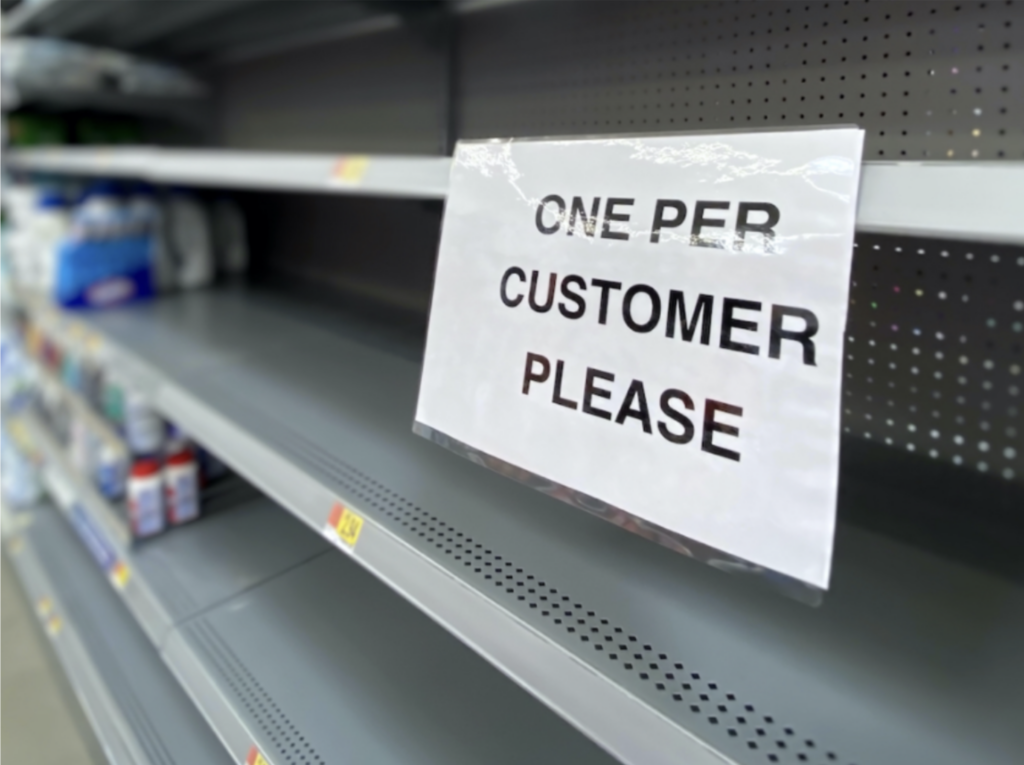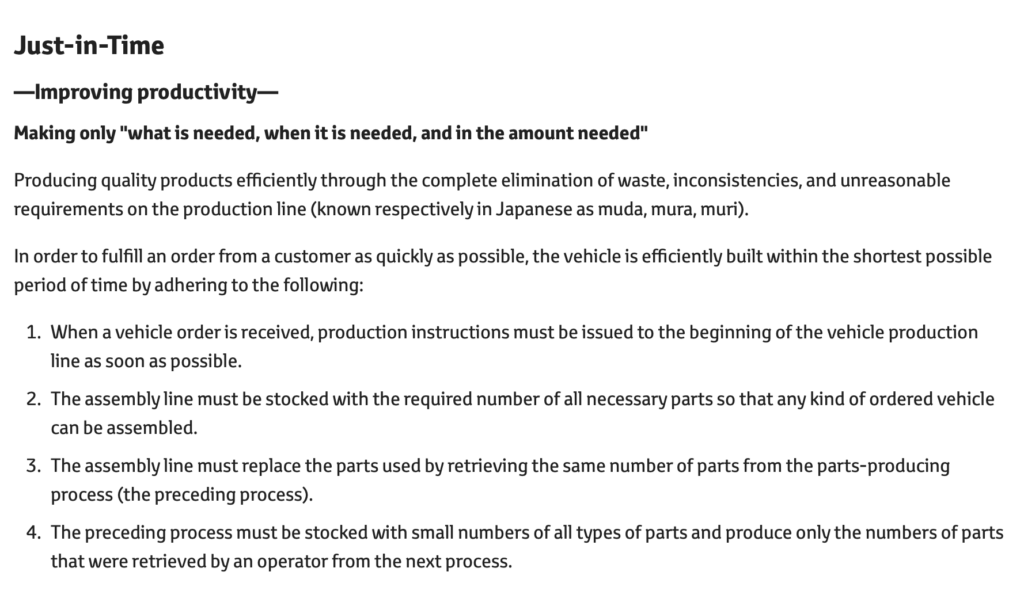
Introduction
Shortages have been a common problem since the start of the Covid-19 pandemic. Remember the issues over PPE and hand sanitiser? The empty supermarket shelves? While customers ran out of toilet roll, manufacturers cut back production. Even automotive supply chains were affected – the chip shortage having a longer-term impact on new vehicle sales. Supply chain disruption is commonplace and it’s now a regular topic in the mainstream media. Just a few weeks ago we had no tomatoes – unpredictable weather resulting in poor harvests and the hike in energy prices partly blamed for delaying UK growers from sewing crops. Global supply chains in every industry are broken. The question is does lean hold the answer?
Research into Lean Supply Chains
This is the title of a break-out at our 2023 UK Lean Summit in Liverpool, next month. For over 25 years we have been involved in supply chain research. Initially we asked questions about comparative performance. Were lean supply chains more effective? The unanimous conclusion was they were. Then we researched, with success, how to implement them. We helped supermarkets and online retailers design systems with high levels of fulfilment. But somehow, through this journey, many industry players lost the plot. They outsourced activities to low-cost labour countries. As a result, they lost responsiveness, lead times increased and they forgot about supply chain network design and how to manage risk. At the same time firms over relied on their ERP planning systems or over invested in automation. Increased efforts were made to forecast – because lead times were so lengthy. Everyone forgot the benefits of flow and pull as push logic prevailed.

To rub salt into the wounds, in August 2021, Sharon Terlep and Annie Gasparo blamed lean manufacturing for consumer goods shortages during the pandemic. In a Wall Street Journal article devoid of any recognition to supply chain dynamics, supply chain design or any understanding of lean thinking I was left wondering where we had gone wrong? How come a whole generation of managers had failed to realise the benefits of lean supply? Why was Just-in-Time being blamed when it still provides credible countermeasures to the shortages problem?
The Just-in-Time pillar
On reflection, we’ve always had a problem explaining the principles. The Just-in-Time pillar in Toyota’s Lean Production System House is an obvious example. In “Toyota, A History of the First 50 Years” Kiichiro Toyoda is quoted as saying “People talk about having missed a train by a minute, but of course it’s possible to miss a train just by a second. What I mean by ‘just-in-time’ is not simply that it is important to do something on time, but that it is absolutely essential to be precise in terms of quantity and not, for example, produce something on time but in excess, since excess amounts to waste.” Taken literally, one may conclude that Just-in-Time is all about reducing inventory. This is a common misconception. Dig a little deeper and one learns more.
Supply Chain Disruption: Problems to solve and Effective Countermeasures
Lean thinkers learn that countermeasures are related to the problems we face. At the beginning of 1937, Kiichiro performed a detailed cost calculation and revenue expenditure estimate. He concluded that if Toyota built a fully-fledged plant at Koromo, producing 1,500 vehicles per month, the company would be able to make a profit even after the interest due on loans. During the design stage, he wanted the layout “conducive to the smooth production of complete automobiles.” The entire plant was laid out according to the manufacturing flow from the bringing in of raw materials to the dispatch of the completed automobiles. Even in the machine shop, equipment was laid out in production flow by arrangement according to the production sequence rather than by function or type.
Focus on Flow
The focus on flow highlights problems. When Taiichi Ohno became manager of Final Assembly in 1945 he was surprised to find, in any one month, an assembly plant would be idle for perhaps 20 days, waiting for parts to arrive, and would perform assembly work during the remaining 10 days. On low volumes, Japanese plants were inefficient. Shortages prevailed. Ohno’s countermeasures included multi-machine handling where each employee would be responsible for operating more than one machine. This results in a dramatic productivity improvement. In addition, he utilised the jidoka concept. This originated by Sakichi Toyoda where a loom would stop automatically when a thread broke. While productivity improved, excessive production by one kind of machine was still possible. Thus in-process parts could build up waiting to be processed by the downstream activity. To help resolve this problem, one employee was put in charge of handling more than one process in the order of the work flow. Such multi-process handling immediately showed the futility of producing more parts at intermediate processes than could be finished downstream.
With this better flow, the next apparent problem is how to smooth the flow between the processes and between different factories. For example, smoothing the flow between machining and engine assembly, or between engine assembly and vehicle assembly. This is where ‘pull’ is key. Rather than sending parts on to the next stage as soon as they were completed, the team member at the later (downstream process) would go to the preceding (upstream) process when they needed parts and pick up only the number required. In turn, at the earlier (upstream) process only enough parts would be produced to replenish what the later process had used. This activity realised the Just-in-Time system of Kiichiro Toyoda.
Making only “what is needed, when needed in the quantities needed”
Today, when lean thinkers talk about Just-in-Time, they mean “making only ‘what is needed, when it is needed, and in the amount needed.’” As John Shook rightly points out in this Planet Lean post, “The critical supply chain (or, as lean thinkers prefer to call it, a value stream) problem to solve is that each point in the chain needs to know at any given moment exactly what to make and what to move.” Such thinking turns on its head more traditional approaches to supply chain design. Instead of starting from a cost point of view around how much inventory we should be holding, inventory is an effect of how the system is designed. If you design the system to supply from half the way around the world, don’t be surprised that you need more inventory to cover transportation time, delays and any problems you encounter along the way.

Conclusions
To be effective in lean supply chain design one must understand the purpose of the supply chain, the process steps and how people will interact with it. The fundamental is the shift from push to pull. Such a shift highlights problems which, in turn necessitates the development of problem solving capability. Thinking through how you can compress time in a controlled sustainable way to develop systems with high fulfilment. Add into the mix that these supply chains need to be good for the environment and we have the perfect opportunity once more to take another look at extended value stream design.